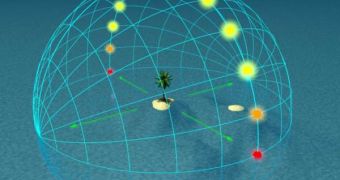The idea that apples might fall from trees differently in the summer and in the winter may seem preposterous, but Indiana University in Bloomington (IUB) Physicist Alan Kostelecky and graduate student Jay Tasson think that the idea may not be so far-fetched. They argue that violations in Newton's law may have easily gone undetected for centuries, and that they may have plagued physics ever since.
“We have made a surprising and delightful discovery. We might just catch a glimpse of the ultimate theory that underpins our universe,” NewScientist quotes Kostelecky as saying. In a recently published study, the pair shows that looking into such discrepancies in the laws of physics might help scientists learn how the Universe functions. The paper appeared in a recent issue of the scientific journal Physical Review Letters.
After more than 20 years of research in the field, the expert believes that the best way of finding a theory that unites Einstein's theory of relativity (which shows how gravity works) and the standard model of particle physics (which offers a description of the quantum matter in the Universe, and of how all other forces, except gravity, work) is to look for things they cannot explain.
That is to say, taken separately, each of these two theories is perfectly able to explain a lot of things. There could, however, exist some events that may not be included in any of the separate theories, but which could find an explanation in a united one. “The challenge is to find those phenomena,” Kostelecky added.
The two researchers are currently focusing their efforts on studying a law known as the Lorentz symmetry, which basically states that things look the same throughout the Universe, for an observer moving at a uniform speed. According to this theory, there is no axis of the Universe through which matter, light, or spacecraft may travel easier. The galaxies and the solar system look the same from any point in space. That being said, Kostelecky himself admitted that, until this point in time, no discovery had ever violated the Lorentz symmetry. But we might have very well been looking in the wrong place, the expert pinpointed.

 14 DAY TRIAL //
14 DAY TRIAL //